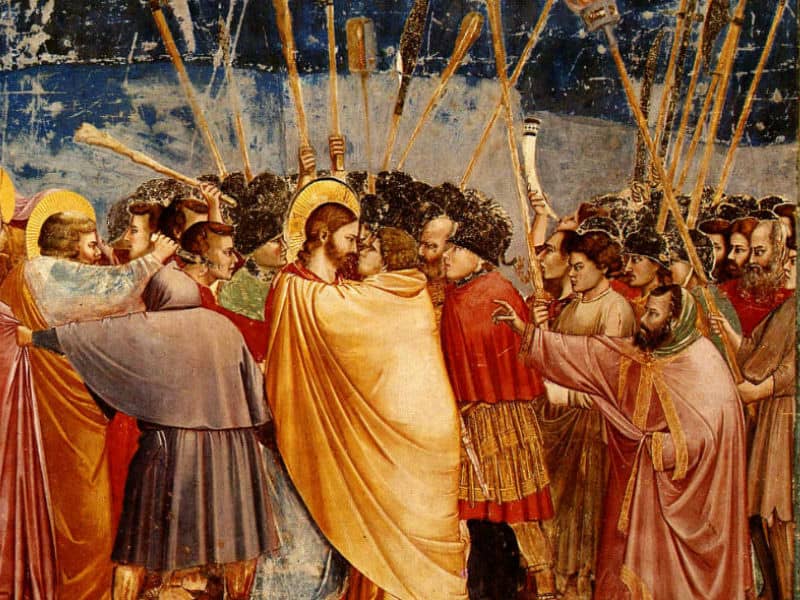
Oddly enough, the Bible really doesn’t describe Hell in great detail. In Revelation, the final book of the New Testament, the Apostle John describes a “lake of fire” ( Revelation 19:20). The souls of the evil departed are “cast alive into a lake of fire burning with brimstone.” At the end of time, Revelation 20:10 tells how “the devil is cast into the lake of fire and brimstone where the beast and the false prophet shall be tormented forever and ever.”
What is Hell really like?
One of the most detailed descriptions of Hell was penned by the medieval poet Dante in his classic, The Inferno, illustrated by the great master Gustave Dore. The Inferno begins on Good Friday in the year 1300. The poet, 35 years old, has reached middle age according to the standards of the time. He is lost in the deep woods and falls into despair. Considering suicide, he encounters the spirit of the ancient Greek poet Virgil, who conducts him on a journey through the gates of Hell. There, Dante sees the famous line, “Abandon all hope, ye who enter here.” And that is, indeed, the chief punishment of all the inhabitants: they have no hope of release or escape from their punishments. Furthermore, they are completely separated from God – in Hell, the Almighty no longer listens to their prayers.
How accurate is Dante? The great Puritan minister Jonathan Edwards preached on Hell’s torments a number of times. In one of his most famous oratories, “Sinners in the Hand of an Angry God,” he describes how “The wrath of God burns against them, their damnation doesn’t slumber, the pit is prepared, the fire is made ready, the furnace is now hot, ready to receive them, the flames do now rage and glow. The glittering sword is whet and held over them, and the pit hath opened her mouth under them.” We would all be doomed to such a fate, he warned – except for God’s grace: “The devil stands ready to fall upon them and seize them as his own, at what moment God shall permit him,” proclaimed Edwards. “The old serpent is gaping for them; hell opens its mouth wide to receive them; and if God should permit it, they would be hastily swallowed up and lost.”
Virgil guides Dante through the nine circles of Hell. Each deeper level holds greater sinners and greater punishments. The deepest circle of Hell is at the center of the Earth, and it is here that the chief sinner, Satan, is held bound in a lake of ice for all eternity. Is this what Hell really looks like? “Although there are quite extensive descriptions of heaven in the Bible, there are no really detailed descriptions of hell,” writes author Richard Deems. “Most of the descriptions of hell merely describe the fate of its inhabitants.” Among the Bible’s few descriptions are fire and brimstone, a burning wind, a fiery oven and unquenchable fire. “Since there could be a lot of party people in hell,” says Deems, “one might think that it will be one big party. However, the problem is that the likes of Adolph Hitler, Joseph Stalin, and other unsavory characters will be there also. In order to keep those people from tormenting their neighbors excessively, all the inhabitants will be restrained.”
The residents of Hell.
The sinners that Dante encounters in the Inferno are each punished in a fashion befitting their crime. The most severe punishments are reserved for the residents of the lower depths. Many are not repentant and justify their sins. Despite their punishments, they cannot feel remorse. The residents of Hell also do not know the present; they can only remember the past. Dante lists sins that you and I might not ordinarily consider, such as “barraters” – people who file frivolous lawsuits against the innocent. Forgers have a special place in Hell, as well, according to Dante. So do blasphemers – people who use God’s Name disrespectfully. And gluttons – receiving their special punishment. Dante also includes “simonists,” those who attempt to pay money to purchase God’s favor and salvation. In any case, Hell was not a fun place, according to Dante. He tours and then is allowed by the angel blocking the exit to leave. The Bible, however, warns that for you or me, no such escape is possible. So, it would seem a very good idea just to avoid being sent there in the first place!
Why should Christians be aware of Hell?
If you have a relationship with Jesus, you shouldn’t be afraid of Hell. However, it does spur us out of our sleep to have as many discussions with nonbelievers as possible. With that being said, try not to give any “turn or burn” sermons because so much damage has occurred by telling people to turn to Christianity only to avoid Hell. Perfect love draws fear away, and we shouldn’t start a relationship with Jesus by fearing death. However, we can talk about the nature of Hell and the need for Jesus, but we also can’t make that the only subject upon which we preach. If you only preach brimstone and fire, you’ll turn others away from the church.
Hell is very real. No matter if we believe in a literal fire and brimstone place or a place with some kind of torment, we know that humans choose the path to Hell. God doesn’t send them there. Luckily, we have a Savior who came to earth, died, and resurrected so that we can have new life. Even when discussing Hell with others, we can tell them about the hope of eternity and salvation that we have inside us.

